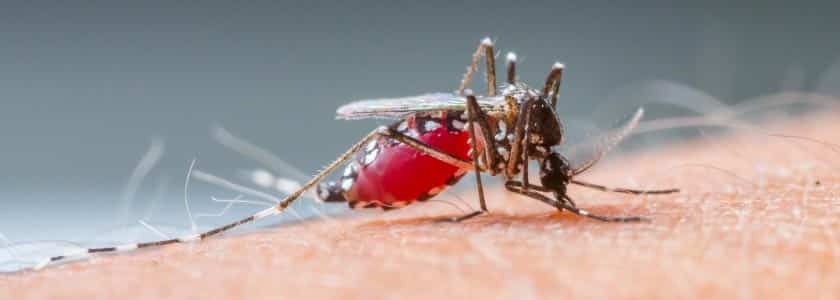Of all the parasites that disrupt human life, few equal the ferocity of malaria.
History of Malaria
Hailing from the tropics primarily in Africa, Central and South America, and Asia, malaria is spread by a bite from an infected female Anopheles mosquito. Infected individuals typically first experience fever, chills, diarrhea, and vomiting. As the infection spreads, though, the symptoms worsen, with anemia followed by jaundice, mental confusion, kidney failure, seizures, and eventual death.
Given malaria is most common in the poorest regions of the world only compounds its misery. Although prophylactics are widely available, and treatment—if the infection is caught in time— is relatively straightforward, low-tech, and effective, the disease has a deadly grip on the world: in 2019, there were an estimated 229 million cases of malaria worldwide, with an estimated death toll ~409,000. Of these, 94% of cases and deaths were in Africa, and more than two-thirds of all deaths were in children under the age of 5.
Scientific discoveries, however, are joining forces to chip away at the deadliness and impact of malaria. Novel molecular targets and their inhibitors for antimalarial drug development approaches are being investigated, including proteases, protein kinases, Plasmodium sugar transporter inhibitor, aquaporin-3 inhibitor, choline transport inhibitor, dihydroorotate dehydrogenase inhibitor, isoprenoid biosynthesis inhibitor, farnesyltransferase inhibitor and enzymes are involved in lipid metabolism and DNA replication. The World Health Organization has recommended a groundbreaking malaria vaccine for children at risk called RTS,S/AS01. And earlier this year, a new sequencing analysis worked to uncover the geographic origin of the parasite that causes malaria.
Where does Plasmodium vivax originate?
There are two main strains of malaria, Plasmodium vivax (P. Vivax) and P. falciparum. P. vivax is the most common malaria parasite and causes between 12-22 million cases of malaria a year, with the main center of infections in Central and Southeast Asia, though it is not as deadly as P. Falciparum. While the origins of P. vivax are unclear, two dueling theories about where it came from have developed.
As reported in the journal Science Advances, researchers recently sequenced more than 400 P. vivax samples from different parts of the world and more than a dozen P. vivax-like samples. Led by Virginie Rougeron from the Laboratoire MIVEGEC in France, researchers characterized the genetic variation among the parasites and went on to trace the likely origin of P. vivax to Southeast Asia and additionally discovered that it likely spread through serial founder events—the migration of populations over long distances.
In the study, Rougeron and her colleagues analyzed genome-wide data from 1,154 P. vivax isolates that came from 21 countries; the sample included 20 newly sequenced isolates from Mauritania, Ethiopia, and Sudan, as well as 27 P. vivax-like isolates. Quality control measures whittled the dataset down to 447 P. vivax and 19 P. vivax-like samples. From these, the researchers identified more than 2 million SNPs, from which they constructed maximum likelihood genetic trees that revealed three distinct clades, or monophyletic groups of organisms composed of a common ancestor and its lineal descendants.
First, researchers separated the P. vivax and the P. vivax-like samples and found that they were sister clades, which runs counter to the findings of a previous study. That study found that P. vivax fell within the radiation of P. vivax-like. The second split was among P. vivax-like strains themselves, which were believed to be composed of two different lineages. Since the strains didn’t recombine, the hypothesis was presented that they were distinctly different species.
Further analysis with a principal components analysis and other genomics tools found consistent patterns among the P. vivax samples that showed them clustered by region. This analysis split Southeast Asian samples from the African and American ones. Samples from India and Sri Lanka were genetically closer to African samples than to other Asian ones, which researchers theorized could have been due to human migrations, and the same went for the American strains. Modeling led researchers to the conclusion that the most recent common ancestor of P. vivax originated within populations from Southeast Asia and spread from that ancestral Southeast Asian population through a series of founder events globally.
“Our results based on whole-genome sequencing data support an out-of-Asia origin, rather than an African origin, for the world populations of P. vivax, with a signal of stepping-stone colonization events accompanied by serial founder effects,” the authors wrote.
What’s next for Plasmodium Bivax Malaria. vivax?
Rougeron and her colleagues suggest examining Plasmodium vivax malaria in specific regions and how and when those different regions found themselves with this strain of malaria.
“The question of the host of origin,” they wrote, “still remains open.”



























